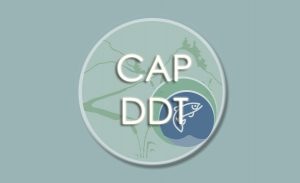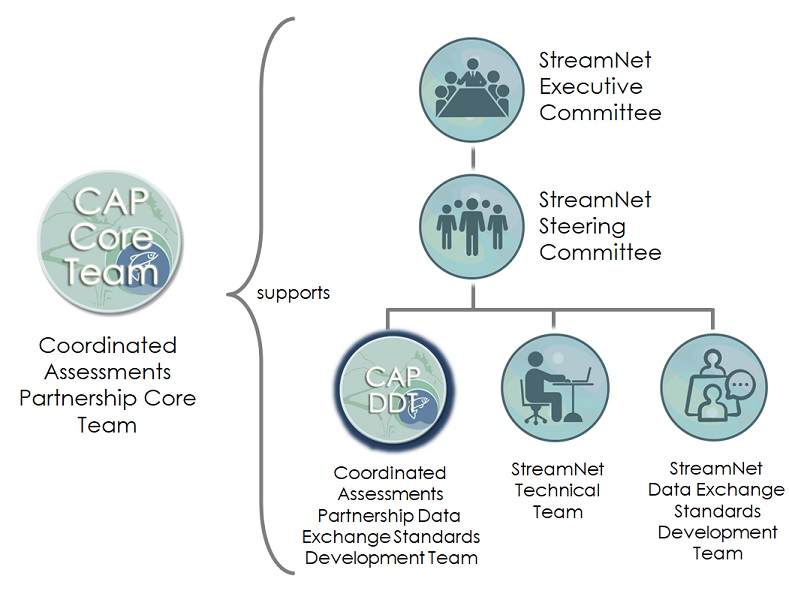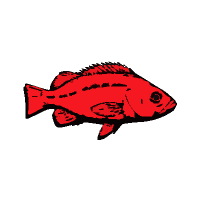CAP DES Development Team

Purpose
The Coordinated Assessments Partnership DES Development Team (CAP DDT) creates the data-sharing rules for high-level indicators (HLIs) of fish population health and also documents the rules in the CAP Data Exchange Standard (DES). A DES is a set of formal rules for the meaning and structure of shared data. These rules are agreements among partners on the definition, structure, manipulation, and management of shared data. The CAP DES documents rules for data shared via the Coordinated Assessments Exchange (CAX) data system. This data system receives and houses standardized fish population health HLI time series data sets, and it makes them publicly available through online query tools. The source data come from the multiple state, tribal, federal, and other CAP partners’ data management systems and are converted by the data owners to the DES standards for sharing via the CAX.
Goal and Objectives
The CAP DDT’s goal is to improve the quality of fish population health HLI data obtained from the CAX, facilitating assessments and reporting for fisheries mitigation, recovery, and management. To achieve this goal, the CAP DDT develops HLI DESs and collaborates with the StreamNet Executive Committee (SN ExCom) and StreamNet Technical Team (SN TT) to determine how these data should be presented and made available via online query systems. More specifically, the CAP DDT:
- Adds DESs for new population-scale fish population health HLIs and metrics, as specified in the Five-Year Plan for the Coordinated Assessments Partnership, and for other data categories as needed
- Refines existing DESs to improve the quality of data accessed
- Implements DES additions and changes in a manner that considers efficiency for data providers and StreamNet staff and utility for data end users
- Reduces duplication of effort by data providers by leveraging content from other regional data systems to provide metadata and other supporting content for submitted data
- Achieves efficiencies in data flow processes from partners’ data management systems to the CAX system
Background
The CAP DDT, originally formed in 2012, is comprised of representatives from several perspectives: biologists and administrators from the data source/primary data using agencies; regional scale data users; and data management/IT specialists. The CAP DDT was roughly modeled after the then-current team that developed the StreamNet DES. Since then, though they are independent, the functions and procedures of the SN DDT and CAP DDT have evolved in tandem.


Relationship with Other Teams and Committees
The CAP DDT serves under the SN ExCom. It consists mainly of the data-contributing partners’ biologists, who calculate the HLIs and metrics, and data management professionals. It focuses on the exchange of data for the priority HLIs and metrics identified by the SN ExCom in the Five-Year Plan for the Coordinated Assessments Partnership. The CAP DDT also coordinates, as needed, with the SN TT and the SN DDT.
Members and Chair
The CAP DDT consists of biologists, data management, and information technology (IT) technical staff from the federal, tribal, state, and regional organizations submitting and consuming HLI data. The CAP DDT invites outside subject matter experts and data managers to contribute to the work group’s task(s), as necessary.
Most member organizations will have more than one individual participating on the CAP DDT. Organizations are requested to identify up to two Primary Representatives who will contribute to discussions during formal DDT meetings.
The CAP DDT is organized and facilitated by Pacific States Marine Fisheries Commission (PSMFC) StreamNet staff, with the StreamNet Regional Fishery Biologist / Database Administrator serving as Chair. A partner can be selected to serve as co-chair to assist during years with more active work-load for the team. The PSMFC vice-chair supports the co-chairs with meeting planning, materials, and status of action items. The CAP Co-Leads (StreamNet Program Manager and Pacific Northwest Aquatic Monitoring Partnership Coordinator) participate as needed to provide contextual input from the Five-Year Plan for the Coordinated Assessments Partnership and to convey information from the SN ExCom, StreamNet Steering Committee (SN SC), CAP Core Team, and Pacific Northwest Aquatic Monitoring Partnership (PNAMP) Fish Monitoring Work Group.
Meetings
Meetings take place twice per year to, at a minimum, discuss status, progress, and challenges. Additional meetings are held as needed to make timely progress on new or revised DESs.
The chairs and vice-chair assist with setting meeting dates, agendas, and notes.
Meeting agenda topics can be submitted to the chairs or vice-chair.
The chairs and vice-chair keep StreamNet DDT members and the SN ExCom informed of meeting dates, agendas, and notes.
Current Members
Current membership reflects the existing focus on HLIs for natural-origin salmon and steelhead populations. As the data categories and geographic extent of the data submitted change over time, the membership and the scope of work may evolve to include additional organizations or data categories.
The roles of the representatives are identified in the table as Primary Representative (PR), Observer (O), and Not currently formally involved (-).
- Mike Banach (Chair, PSMFC)
- vacant (Co-Chair, Partner)
- Mari William (Vice Chair, PSMFC)
- Russell Scranton (PR, BPA)
- George Batten (PR, Environmental Science Associates, assisting Colville Tribes)
- Denise Kelsey (PR, CRITFC)
- John Powell (PR, IDFG)
- Evan Brown (O, IDFG)
- Bekki Waskovitch (O, IDFG)
- Jay Hesse (PR, NPT)
- Ryan Kinzer (PR, NPT)
- Katie Barnas (PR, NOAA Fisheries/NWFSC)
- Kasey Bliesner (PR, ODFW)
- Jake Chambers (O, ODFW)
- Nadine Craft (O, ODFW)
- Dan Rawding (PR, WDFW)
- Brodie Cox (O, WDFW)
- Michelle Groesbeck (O, WDFW)
- Michelle Steg (PR, YN)
- Jen Bayer (CAP Co-lead, PNAMP-USGS)
- Nancy Leonard (CAP Co-lead, PSMFC)
Currently there are no members identified for CTUIR, CTWSRO, NPCC, SBT, and USFW)
Team Documents
| File | Description | File Date |
|---|---|---|
| StreamNet DES (version 2024.1) | StreamNet Data Exchange Standards (DES) document version 2024.1. Contains data structures, definitions, and business rules for fish monitoring data, location coding, age data, fish distribution, barriers, references, hatcheries, and dams. This version applies to data sent February 1, 2024 and after. | 2023 |
| Five-Year Plan for Coordinated Assessments Partnership 2nd revision of the 2019 adopted version (rev Nov 2022) | This is the 2nd revision of the Five-Year Plan for Coordinated Assessments Partnership adopted in 2019. This November 2022 revised version incorporates edits discussed and supported during the StreamNet Executive Committee meeting on September 21, 2022. | 2022 |
| Five-Year Plan for the Coordinated Assessments Partnership adopted 20190731 (revised 9Sept2021) | Revised version of the Five-Year Plan for the Coordinated Assessments Partnership adopted in 2019 and revised in 2021 during the September 9, 2021 Executive Committee meeting. This updated version of the plan describes the hatchery indicator work that is ongoing through the HCAX project, updates the approach for adding new content about the available of data for salmon and steelhead populations without CAP Fish HLIs and /or trends data, and updates the CRITFC ITMD project description. | 2021 |
| CAP FAQ 2020 | Frequently asked questions are answered in this CAP FAQ document produced in 2020 | 2020 |
| Coordinated Assessments Partnership 2020 Fact Sheet | Summary of the Coordinated Assessments Partnership, as of December 2020. | 2020 |
| Coordinated Assessments DES documents for current version (20200715) | Coordinated Assessments Data Exchange Standard, Version 202007015, Effective Date: 7/15/2020. This ZIP file contains the following file versions of the DES: PDF document, word document, word document with track changes, Access Database template, and Excel template | 2020 |
| Coordinated Assessments Data Exchange Standard Development Team (DDT) Charter | This Charter describes the functions of the Coordinated Assessments Partnership (CAP) Data Exchange Standard Development Team (DDT) and the processes used, including convening task-specific ad hoc work groups as needed. | 2021 |
| Data Exchange Standard Development and Revision Procedures | Describes process followed when creating a new data exchange standard (DES) or when revising an existing DES used for exchanging standardized data with StreamNet’s fish monitoring data (“trends”) and with Coordinated Assessments Partnership’s fish high level indicators data systems. | 2021 |
| Goal and objectives of the DET Development Team version 3.0 (Jan 2012) | The DET Development Team (DDT) will finalize the Data Exchange Template (DET) that will be used to guide sharing of specific defined data as a routine business practice of the Columbia Basin’s state and tribal fisheries management agencies (agencies). The DDT is made up of representatives from three perspectives: biologists and administrators from the data source / primary data using agencies; regional scale (secondary) data users; and data management / IT specialists. Results and recommendations from the DDT will be shared with and reviewed by a wider DET review group and the CA Planning Group (CAPG). | 2012 |
| Five-Year Plan for the Coordinated Assessments Partnership (v. 20200902) | Sep 2, 2020 Executive Committee Meeting – Five-Year Plan for Coordinated Assessments Partnership (v. 20200902) | 2020 |
| Data Management Top Ten List (2015) | These are the ‘top ten’ data management and sharing recommendations condensed from ‘Considerations for Regional Data Collection, Sharing and Exchange’ by StreamNet (www.streamnet.org). This list, in no particular order, represents aspects to consider and address in developing data management and sharing approaches. They are not specific instructions. | 2010 |
| Considerations for Regional Data Collection, Sharing and Exchange 2009-Schmidt | This is a general guide, independent of the purpose or use of the data, intended as a “nuts and bolts” description of the steps needed to establish a comprehensive approach to data sharing. The focus is more on the container than the contents. | 2009 |
| StreamNet Data-Contributing Partners’ QA/QC Procedures (2019) | Before data is shared with StreamNet, it first undergoes QA/QC procedures at the source. This document is a summary of those processes used in 2019 by our current StreamNet partners: Colville Tribes, IDFG, MFWP, ODFW, and WDFW. | 2019 |
| Coordinated Assessment Data Sharing Agreement (DSA), End User License Agreement (EULA), and Data Use Policy (v.20170808) | This DSA, EULA, and policy are intended for use with CA data sets that have passed QA and are ready for dissemination online. The StreamNet Steering and Executive Committees have reviewed this DSA and will remain avenues to discuss any changes or concerns that participants may have about access to these data. | 2017 |
| Citing Aquatic Monitoring Data Sets: Best Practice Recommendations for Authoritative Data Citation | We explore best practices and provide recommendations for including robust metadata attributes within data sets to enable data publication and citation using the CA and SPS data repositories as case studies. From reviewing the current citations possible from the CA and the SPS we recommend at minimum that natural resource monitoring databases contain: metadata to identify organizations that generated the data; contact persons for each organization that contributes data to an aggregated data set; and that metadata be incorporated into databases to enable autogenerated citations that recognize all contributing organizations with time-stamped versions of the data delivered. | 2019 |
| RperS table XML schema (CAX-SCADE) | Natural origin fish recruit per spawner (RperS) table XML schema for data exchange with the EPA Exchange Network. | 2016 |
| SAR table XML schema (CAX-SCADE) | Natural origin fish smolt to adult return (SAR) table XML schema data exchange with the EPA Exchange Network. | 2016 |
| NOSA table XML schema (CAX-SCADE) | Natural origin fish spawner abundance (NOSA) table XML schema for data exchange with the EPA Exchange Network. | 2016 |
| Defined types for schema (CAX-SCADE) | General schema document for defined types used for data exchange with the EPA Exchange Network. | 2016 |

